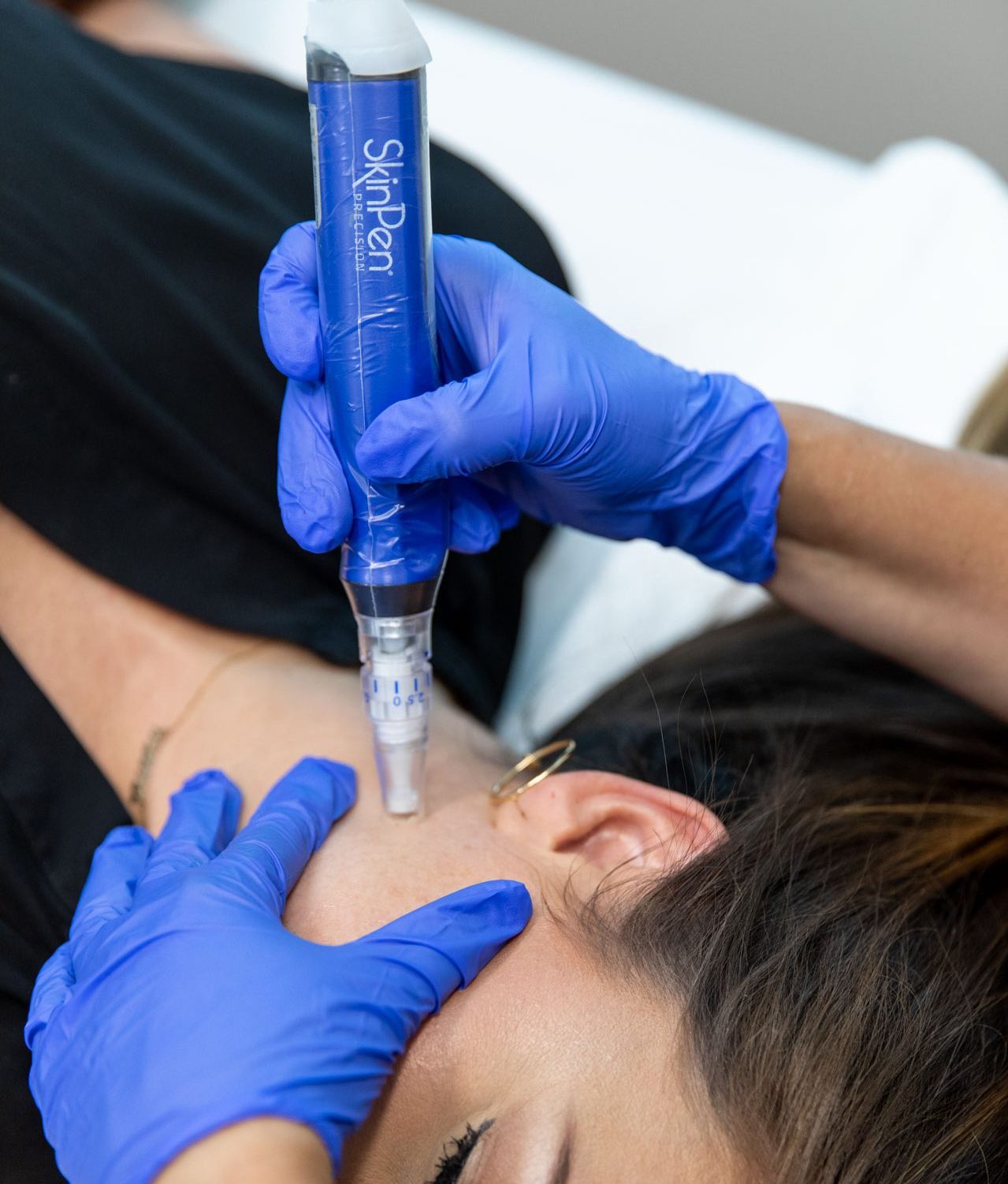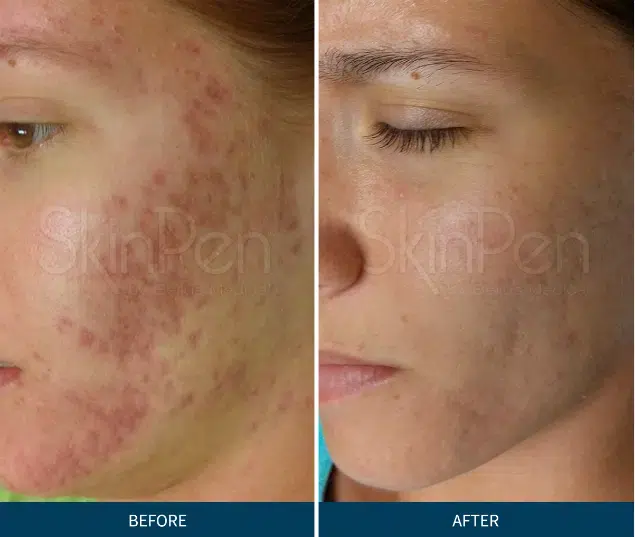
Microneedling, or micro-needle induction therapy, represents a remarkable advancement in aesthetic medicine. This non-invasive method stimulates the production of collagen and elastin, offering an effective solution to various skin issues. This article explains how microneedling works, its indications, its benefits for your skin, and post-treatment care.
Microneedling uses a device equipped with small needles to create fine perforations in the superficial or middle layer of the skin, depending on the targeted objectives. This technique activates the skin’s natural self-healing mechanism, resulting in improved firmness, youthfulness, and skin texture, reducing issues such as acne and pigment spots.
For its anti-aging action: By stimulating collagen and elastin fiber production, this mechanical needle stimulation technique effectively reduces fine lines and wrinkles, addresses skin laxity both preventively and actively.
For its improvement of skin quality and texture: By reducing acne scars, tightening enlarged pores, and diminishing skin issues like laxity and stretch marks.
For its even skin tone: By enhancing radiance and complexion and reducing brown hyperpigmentation spots.
Following the doctor’s recommendations after the treatment is essential to promote optimal healing. Common advice includes using moisturizers, avoiding direct sun exposure, and regularly applying sunscreen daily. Avoid swimming pools, hammams, and saunas. Baths are to be avoided, but showers are possible.

This technique is suitable for all skin types, both women and men, all phototypes, and is particularly recommended for those looking to improve the appearance of their face, neck, décolleté, and body skin without invasive procedures.
Microneedling offers a safe and effective method with its micro-needles to revitalize the skin by activating natural skin repair processes, ensuring visible and lasting results
What is Collagen?
It is a vital protein that serves as the main component of connective tissue in our body, including the skin. It is responsible for firmness, elasticity, and skin regeneration. With age, its natural production decreases, leading to the appearance of aging signs like wrinkles, loss of firmness, and other skin changes.
The Principle of Microneedling:
Microneedling uses a special device equipped with micro-needles to create tiny perforations. Although these perforations are superficial, they are significant enough to activate the body’s natural healing mechanisms without causing permanent skin damage.
To induce the healing response:
When the micro-needles penetrate, they cause micro-lesions in the epidermal layers, triggering a natural inflammatory response. This response initiates the healing process, including the production of new collagen fibers.
To stimulate growth factors:
Creating micro-lesions also increases the production of growth factors. These growth factors are essential for forming new collagen and elastin, helping to strengthen and rejuvenate the skin’s structure.
To remodel collagen in the dermis:
Over multiple sessions, microneedling helps organize and densify this formed protein, improving skin texture and elasticity.
The needle depth in a microneedling treatment can vary from 0.25 mm to 2.5 mm, directly influencing effectiveness and the type of skin response:

Microneedling effects manifest gradually, day by day, as collagen and elastin production is not instantaneous. After the first session, patients can observe brighter and smoother skin. Skin quality results continue to improve with the number of sessions, usually between three to six, spaced a few weeks apart, depending on individual needs and skin type.
Microneedling can be combined with other aesthetic procedures to enhance results. For example, combining with treatments like chemical peels can accelerate surface skin renewal, while adding LED treatments can improve healing and reduce inflammation. Each combination is carefully selected and customized to meet the patient’s specific goals while ensuring treatment safety and effectiveness.
After a microneedling treatment, it is crucial to protect the skin from the sun and avoid any irritating products. It is recommended to follow a gentle skincare regimen, including non-abrasive cleansers, enriched moisturizers, and adequate sunscreen to support healing and maximize results. Patients are also encouraged to drink plenty of water and adopt an antioxidant-rich diet to promote skin repair and protection from within.
Microneedling is an advanced technique that offers a multitude of skin benefits, from reducing aging signs (fine lines, wrinkles, and laxity) to improving texture and complexion. Thanks to its minimal yet effective approach, this method suits a wide range of skin types and conditions and can be personalized to meet the specific needs of each individual. To determine if microneedling is the right option for you, consult a qualified aesthetic medicine professional who can evaluate your skin and discuss the best treatment strategies for your aesthetic goals.
With its impressive results and low recovery time, microneedling continues to gain popularity and has become a staple of modern beauty treatments, allowing everyone to feel more confident and satisfied with their appearance.
If you enjoyed this article, you might be interested in the following articles:
Aesthetic Medicine in Paris: A Gentle Revolution for Well-being and Beauty
Why tone your face? The benefits and techniques in aesthetic medicine
Comments